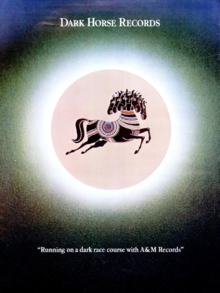아나모렐린
Anamorelin | |
| 임상자료 | |
|---|---|
| 경로: 행정 | 구강 |
| ATC 코드 |
|
| 약동학 데이터 | |
| 제거 반감기 | 6-7시간[1] |
| 식별자 | |
| |
| CAS 번호 | |
| 펍켐 CID | |
| 켐스파이더 | |
| 유니 | |
| CompTox 대시보드 (EPA) | |
| 화학 및 물리적 데이터 | |
| 공식 | C31H42N6O3 |
| 어금질량 | 546.716 g·190−1 |
| 3D 모델(JSmol) | |
| |
| |
Anamorelin (INN) (developmental code names ONO-7643, RC-1291, ST-1291), also known as anamorelin hydrochloride (USAN, JAN), is a non-peptide, orally-active, centrally-penetrant, selective agonist of the ghrelin/growth hormone secretagogue receptor (GHSR) with appetite-enhancing and anabolic effects which is under development by Helsinn Healthcare S암세포탈과 거식증을 치료하기 위한 A.[2][3][4]
Anamorelin significantly increases plasma levels of growth hormone (GH), insulin-like growth factor 1 (IGF-1), and insulin-like growth factor-binding protein 3 (IGFBP-3) in humans, without affecting plasma levels of prolactin, cortisol, insulin, glucose, adrenocorticotropic hormone (ACTH), luteinizing hormone (LH), follicle-stimulating hormone (FSH)[3][5] 또는 갑상선 자극 호르몬(TSH).또한 아나모렐린은 식욕, 전반적인 체중, 날씬한 체질량, 근력을 현저하게 증가시키며,[4][5] 체중의 증가는 혈장 IGF-1 수준의 증가와 직접적인 상관관계가 있다.[3]
2016년 2월 현재 아나모렐린은 비소세포 폐암과 관련된 암의 캐쉬샤와 거식증 치료를 위한 임상 3상을 마쳤다.[6][7]
2017년 5월 18일, 유럽의약품안전청은 비소세포 폐암 환자의 거식증, 캐시샤 또는 의도하지 않은 체중 감소를 치료하기 위한 의약품에 대한 시판 허가를 거절할 것을 권고했다.헬신은 초기의 의견에 대한 재조사를 요청했다.유럽의약품안전청은 이 같은 요청의 근거를 검토한 뒤 의견을 재조사해 2017년 9월 14일 시판허가 거부를 확정했다.[8]유럽의약품안전청은 연구결과 아모렐린이 마른 체구에 미치는 영향은 미미한 것으로 나타났으며 손 잡는 힘이나 환자의 삶의 질에 미치는 영향은 입증되지 않았다고 결론지었다.또한 임상 연구 현장에서의 검사에 따라, 기관은 약물에 대한 안전 데이터가 적절하게 기록되지 않았음을 고려했다.따라서 아나모렐린의 혜택이 위험보다 크지 않다는 게 소속사의 의견이었다.[9]
참고 항목
참조
- ^ Leese PT, Trang JM, Blum RA, de Groot E (March 2015). "An open-label clinical trial of the effects of age and gender on the pharmacodynamics, pharmacokinetics and safety of the ghrelin receptor agonist anamorelin". Clinical Pharmacology in Drug Development. 4 (2): 112–120. doi:10.1002/cpdd.175. PMC 4657463. PMID 26640742.
- ^ Currow DC, Abernethy AP (April 2014). "Anamorelin hydrochloride in the treatment of cancer anorexia-cachexia syndrome". Future Oncology. 10 (5): 789–802. doi:10.2217/fon.14.14. PMID 24472001.
- ^ a b c Garcia JM, Polvino WJ (June 2009). "Pharmacodynamic hormonal effects of anamorelin, a novel oral ghrelin mimetic and growth hormone secretagogue in healthy volunteers". Growth Hormone & IGF Research. 19 (3): 267–73. doi:10.1016/j.ghir.2008.12.003. PMID 19196529.
- ^ a b Garcia JM, Boccia RV, Graham CD, Yan Y, Duus EM, Allen S, Friend J (January 2015). "Anamorelin for patients with cancer cachexia: an integrated analysis of two phase 2, randomised, placebo-controlled, double-blind trials". The Lancet. Oncology. 16 (1): 108–16. doi:10.1016/S1470-2045(14)71154-4. PMID 25524795.
- ^ a b Garcia JM, Friend J, Allen S (January 2013). "Therapeutic potential of anamorelin, a novel, oral ghrelin mimetic, in patients with cancer-related cachexia: a multicenter, randomized, double-blind, crossover, pilot study". Supportive Care in Cancer. 21 (1): 129–37. doi:10.1007/s00520-012-1500-1. PMID 22699302. S2CID 22853697.
- ^ Zhang H, Garcia JM (June 2015). "Anamorelin hydrochloride for the treatment of cancer-anorexia-cachexia in NSCLC". Expert Opinion on Pharmacotherapy. 16 (8): 1245–53. doi:10.1517/14656566.2015.1041500. PMC 4677053. PMID 25945893.
- ^ Temel JS, Abernethy AP, Currow DC, Friend J, Duus EM, Yan Y, Fearon KC (April 2016). "Anamorelin in patients with non-small-cell lung cancer and cachexia (ROMANA 1 and ROMANA 2): results from two randomised, double-blind, phase 3 trials". The Lancet. Oncology. 17 (4): 519–531. doi:10.1016/S1470-2045(15)00558-6. PMID 26906526.
- ^ "Adlumiz". European Medicines Agency.
- ^ "Refusal of the marketing authorisation for Adlumiz (anamorelin hydrochloride): Outcome of re-examination" (PDF). European Medicines Agency. 15 September 2017.


